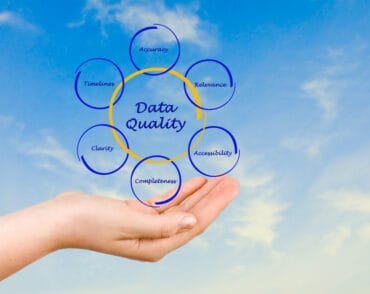
From switching to a data fabric approach to proving business impact, there’s plenty in the data management space to keep us all busy.
Change is the rapid constant of the tech world. So, what lies in store in the world of enterprise data management? Based on years of experience and a group of developments I’ve been noticing, here are five things I see on the horizon.
Prediction 1: Data catalogs and other data management tools will become obsolete unless part of a larger platform play.
Gartner once proclaimed that data catalogs were “the new black” when it came to data management and analytics. It’s not a new concept per se; there’s long been an understanding that you need a common definition of all your business terms, goals, data sets, and systems. But what we’re seeing is the move beyond simple taxonomies to ontologies, which is really understanding the classes of relationships and the structure of data and rules – and how you establish constraints about how the data is managed. It’s more than just a classification. Companies have been implementing these changes, but it’s often in siloes and not spread across the lines of business. While useful independently, all these elements are much more powerful when looked at as a whole.
So, individual tools that only perform one function will not be enough to solve the growing challenges in data management. Even the definitions and criteria used by analysts to classify industry leaders are rapidly changing. Words like augmented, discovery, suggested, etc., are being put in front of classic categories like data quality, integration, and master data management to further highlight the requirements and connected nature of these products. Expect to see long-standing leaders falling behind and innovators taking the lead in 2023.
Prediction 2: More organizations will move from a data mesh architecture to a data fabric approach.
Data mesh architecture is a strategy of decentralizing the data – with the goal of establishing coherence between different business domains. It’s primarily people-driven. It tends to involve subject matter experts in data who are going in, tagging information, designing rules, and understanding who the contributors are, to try to create greater awareness of how to consume data at a business level or what’s happening within your data that may be impacting your business.
By contrast, a data fabric approach is more automated. It will use AI/ML, and it’s not as reliant on expert data scientists. It’s going to be more self-discovering in terms of the insights and value it creates. This design pattern will be increasingly important for companies to start adopting; that’s definitely the direction I see things headed. If you’re not moving toward an automated approach, you’re not going to be able to keep up, and you won’t be able to unlock all the potential value in your systems and data.
See also: How Good Data Management Enables Effective Business Strategies
Prediction 3: Cloud data management takes on outsized importance.
There is much more opportunity for businesses seeking to eliminate legacy data management products now that more solutions are becoming cloud-native. They’re designed for extensibility and integration and create opportunities to build a “best of breed” solution set that matches the exact needs of the customer.
Customers increasingly want to combine all the individual parts – cloud infrastructure, integration, data lakes, analytics platforms, etc. – between strategic application providers and their cloud platform providers.
For example, a customer who has made the decision to move their IT infrastructure to the cloud will want a cloud provider that offers not only compute and storage but data management solutions and services that will accelerate their modernization efforts. These services need to be looked at in terms of how well they will interoperate with the core business applications that will run on that cloud platform. The ability to extend core applications with rich functionality beyond infrastructure will ensure the move delivers the highest business outcome possible and not just an exchange of capital expenditures for operating expenses. So, platforms, applications, and tools that can accelerate this integration and expansion – or help make it faster and easier – will be in higher demand.
Prediction 4: Demand for data observability will grow.
There are many moving parts to data migration. There may be multiple application vendors and cloud providers. To deal with it all, you need a better understanding of the health of the data in your systems and the impact that health, good or bad, has on your business. Data observability helps you assess data health and the ability to troubleshoot and fix problems before things get worse.
The concept actually comes from the notion of DevOps and the ability to remove the silos between development and IT operations for collaborative, fast, and iterative product delivery. Data observability basically steals a page from the benefits of DevOps and applies it to mission-critical corporate data.
If you’re not empowering your teams to truly understand the impact data is having on their business and the tools to address those issues, you’re going to be inefficient, and you’ll be spending more than you should. That’s why I see this as being a growing trend for 2023.
Prediction 5: Customers will become more demanding of their vendors to be able to prove tangible business impact.
If all you can talk about are software features and how your features compare to another product’s features, then you’re not delivering any value to your customer. You must be able to show the business impact that software will have on the business and the ROI associated with its implementation. You need the ability to relate it to the things that the customer’s board and the CEO are using as key metrics. If you can’t draw a clear line to real value, you’re not going to sell your software.
Get prepared
From switching to a data fabric approach to proving business impact, there’s plenty in the data management space to keep us all busy. Make an assessment of what you need to work on, pick one thing, and get prepared.






























